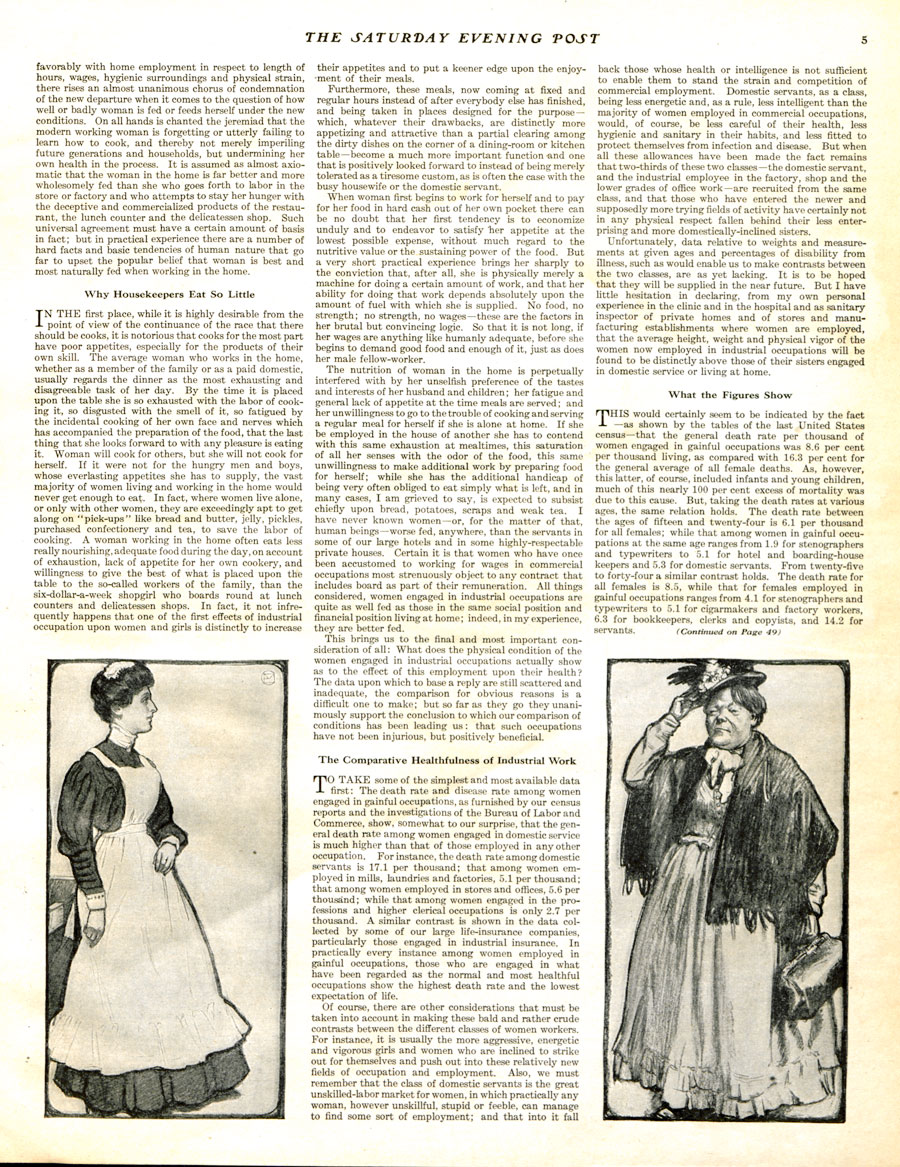“Man’s work is from sun to sun, but woman’s work is never done,” reads the distich in the article “The Health of Working-Women” by Woods Hutchinson, A.M., M.D., from the November 20, 1909 issue of The Saturday Evening Post.
The good doctor examined the changing roles of women in America. He discussed the long hours and meager rewards of the a housewife during the early part of the 20th century, comparing the hours, wages, and conditions of men working in industry to women working at home.
“Most factories have got down to the ten-hour day and many to the eight, and all are rapidly approaching this standard; but the average household day, whether for housekeeper or for domestic, still runs from fourteen to sixteen hours,” reads the Post article. The author also noted that while men working in factories leave their work behind, women do not share these same benefits. “He would certainly be a rash man who would assert that the hours of any factory or sweatshop were longer than those of housework, or that the wages were lower. For almost every man or boy who has to rise in the gray dawn of the winter morning to report for work in the factory or shop at six or seven a.m., some woman has to rise an hour or more earlier in order to prepare his breakfast. And at whatever hour he plods wearily home in the dusk of evening to his supper, some woman has to go on working an hour longer to clear up the table and wash the dishes.”
A century later…
The February 2, 2009, issue of The New York Times reported: “With the recession on the brink of becoming the longest in the postwar era, a milestone may be at hand: Women are poised to surpass men on the nation’s payrolls, taking the majority for the first time in American history,” from the article “As Layoffs Surge, Women May Pass Men in Job Force,” by Catherine Rampell.
Today, though job security is rare during an economic downfall, statistics show women are more likely to retain jobs for a number of reasons, including the fact that men were heavily represented in distressed industries such as manufacturing and construction.
This raises the question: With record numbers of women whose primary positions were once full-time housewives now becoming breadwinners for their families, will the lot of household responsibilities shift as well?
“Many women say they expect their family roles to remain the same, even if economic circumstances have changed for now,” reads The New York Times story.





Become a Saturday Evening Post member and enjoy unlimited access. Subscribe now



